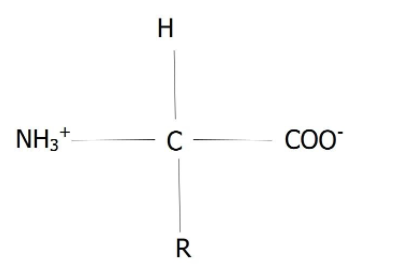
What functional groups are found in proteins?
Answer
438.6k+ views
1 likes
Hint :Proteins serve many crucial functions in biological processes. They transport, act as a catalyst, storage for other molecules. They provide mechanical support, strength to the immune system, every important function happening in our body.
Complete Step By Step Answer:

Proteins are linear polymers of amino acids acting as a monomer unit, they contain a various number of functional groups due to the variety of functions it performs in our body.
Now they are various functional groups present in a protein ranging from alcohols, thiols, thioether, carboxylic acids, carboxamides, etc. All these functional groups have various and different functions to perform when attached to a protein.
Protein residues contain four major functional groups; the Amine group, the hydrogen group, the carboxyl group and the R (which can be any of the different types of amino acids) group.
Some of this amino acid residues also contain other elements such as sulphur but they aren't included in the four functional groups of protein.
The amino group of one amino acid and carboxyl group of another amino acid form peptide bonds, creating amino acid residues and peptide chains.
The functional groups present in a protein are amino, carboxyl and R(variant).
Note :
Proteins react with one another and with other biological macromolecules to form complex assemblies. Some proteins are quite rigid, whereas other display flexibility.
Complete Step By Step Answer:

Proteins are linear polymers of amino acids acting as a monomer unit, they contain a various number of functional groups due to the variety of functions it performs in our body.
Now they are various functional groups present in a protein ranging from alcohols, thiols, thioether, carboxylic acids, carboxamides, etc. All these functional groups have various and different functions to perform when attached to a protein.
Protein residues contain four major functional groups; the Amine group, the hydrogen group, the carboxyl group and the R (which can be any of the different types of amino acids) group.
Some of this amino acid residues also contain other elements such as sulphur but they aren't included in the four functional groups of protein.
The amino group of one amino acid and carboxyl group of another amino acid form peptide bonds, creating amino acid residues and peptide chains.
The functional groups present in a protein are amino, carboxyl and R(variant).
Note :
Proteins react with one another and with other biological macromolecules to form complex assemblies. Some proteins are quite rigid, whereas other display flexibility.
Recently Updated Pages
Master Class 11 Economics: Engaging Questions & Answers for Success

Master Class 11 Business Studies: Engaging Questions & Answers for Success

Master Class 11 Accountancy: Engaging Questions & Answers for Success

Master Class 11 English: Engaging Questions & Answers for Success

Master Class 11 Computer Science: Engaging Questions & Answers for Success

Master Class 11 Maths: Engaging Questions & Answers for Success

Trending doubts
Which one is a true fish A Jellyfish B Starfish C Dogfish class 11 biology CBSE

State and prove Bernoullis theorem class 11 physics CBSE

1 ton equals to A 100 kg B 1000 kg C 10 kg D 10000 class 11 physics CBSE

In which part of the body the blood is purified oxygenation class 11 biology CBSE

One Metric ton is equal to kg A 10000 B 1000 C 100 class 11 physics CBSE

Difference Between Prokaryotic Cells and Eukaryotic Cells




